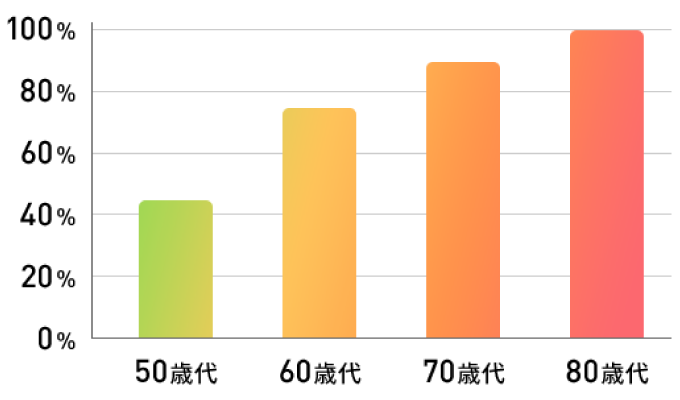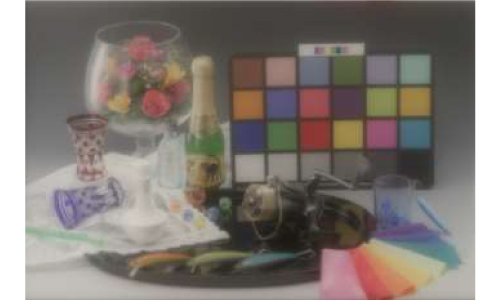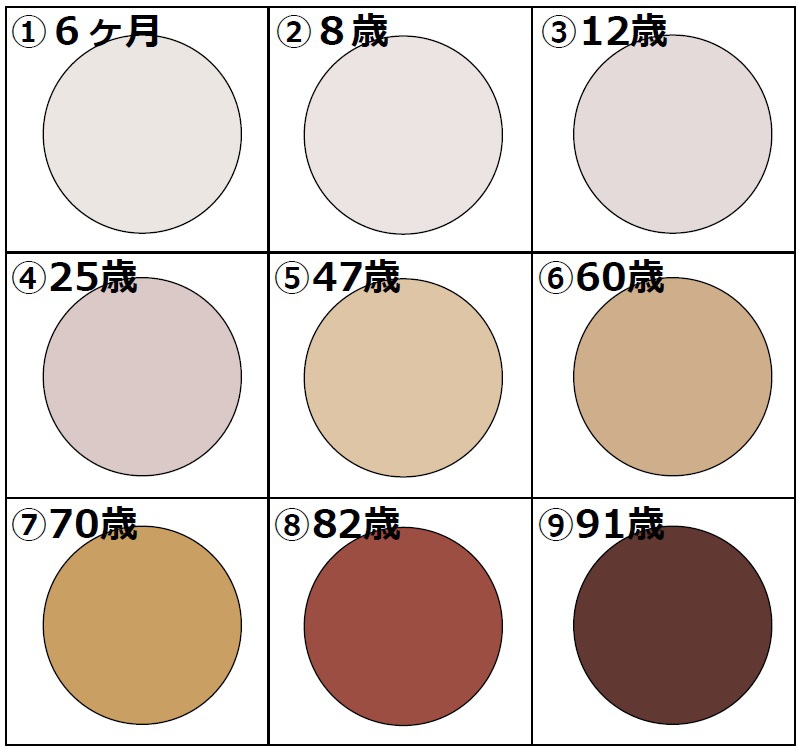Differences in vision due to aging (senile cataract)

- Examples of how people with senile cataracts see
- Changes in vision due to aging
- Increasing the saturation makes it easier to see
Examples of how people with senile cataracts see
When the crystalline lens becomes cloudy, symptoms such as decreased visual acuity and blurred vision, and difficulty seeing because light scatters when going out into bright areas appear (vision varies from person to person).
TOYO INK CO., LTD., in collaboration with Meijo University, has developed a tool that simulates cataract symptoms and allows you to check how you see. As the symptoms of cataract progress, the overall appearance becomes hazy and it becomes difficult to distinguish colors.

How sighted people see colors

How people with mild cataracts see

How people with moderate cataracts see

How people with severe cataracts see
Changes in vision due to aging

Age-related changes occur not only in the crystalline lens, but also in the three types of cones that sense color information. Red has the most number of cones, followed by green and blue. As the blue cones deteriorate, the balance of the three colors will be disrupted, and "yellow" will appear floating.
When the cataract reaches its mid-stage, it becomes difficult to distinguish between yellow at around 30% (dot area ratio) and white paper (0%).
However, if you ask them the color of the white part of the paper, they will say "white" instead of yellow. This is thought to be due to the image that the color of paper is white based on past experience, which is converted in the brain.

Increasing the saturation makes it easier to see
Using a simulation tool developed in collaboration with Meijo University, we conducted repeated interviews with cataract patients and found that increasing the saturation (making it more vivid) made it easier to distinguish images
By using the Chiarossier™ color conversion profile developed by TOYO INK CO., LTD., it is easy to identify cataract patients. , It can also be transformed vividly without discomfort even for sighted people.

Normal decomposition (Japan Color, etc.)

Chiarossier transform (increase saturation)

Simulation results when normal decomposition is viewed by a person with moderate cataracts

Simulation results when a person with moderate cataract views a Chiarossier transformed image
